There are two potted oak trees in my garden that over time have been ravaged from attacks by aphids, sawfly – not to mention a host of infections. My oaks have defiantly and stoically survived whatever adversity has thrown at them and now with the coming of winter new challenges will need to be faced and overcome as strange and alien life forms have started to appear all over them.

Oak leaf infested with spangled galls
Looking at a leaf closely I can see all sorts of lumps and bumps protruding from their decaying forms. Observing closer still and dozens of small fleshy discs, like flying sources become apparent. These strange outgrowths are galls and the oak tree is host to many different species, all of which produce a different response.
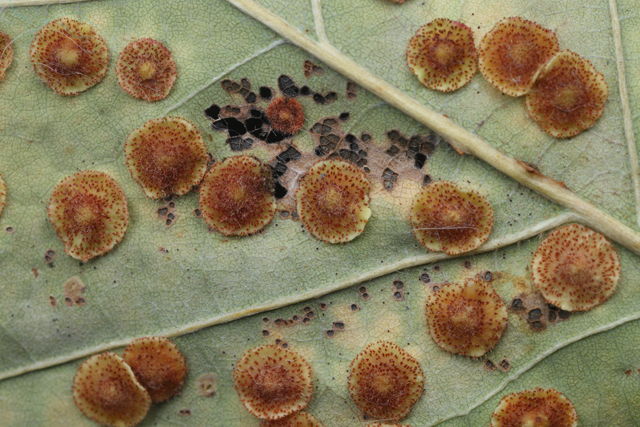
Spangled galls magnified x2 – Canon MP-E 65mm macro
Galls occur on many plants and are aberrations of the plant’s normal growth caused by mites, aphids, fungi or, in the case of the more obvious oak galls, by tiny wasps. For example, those woody balls on the oak twigs are marbled galls and the tiny exit holes are where the wasps have emerged. The overlapping pimples, which coat the undersides of oak leaves, are spangled galls.
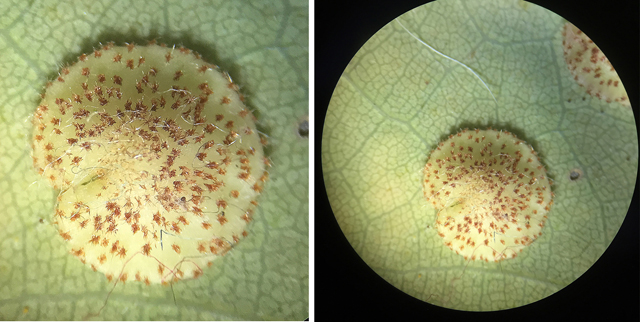
Magnified x20 on stereoscopic microscope
Exactly how the galls are created is not entirely understood by cecidologists (the biologists who study galls). Adult wasps lay their eggs in the plant’s tissue, but when the grubs hatch they somehow interfere with the cell formation to create a shelter, which protects the growing larva. The sheer variety of the responses that the oak tree gives is amazing: a single branch can produce an array of weird growths from cotton masses and ram’s horn prongs to artichoke-shaped buds.

Marble gall on oak, caused by the gall wasp Andricus collari. Solitary or developing in small clusters, the galls are much modified buds, green at first but gradually turning brown and woody.
All of these galls share the same purpose: to protect the growing grubs from predators. However, not all the exit holes on marble galls are made by emerging gall wasps as galls can be mini-hotels for other freeloading insects seeking shelter, some of which may predate on the developing grubs.
Marble galls remain on the trees long after their creators have left and they turn brown with the acorns, while spangle galls detach themselves from the falling oak leaves and continue swelling over winter in the leaf litter as the insects mature inside them. In early spring the young wasps emerge and the gall cycle begins again. The spring wasps lay their eggs in oak buds and their grubs produce current galls on the catkins. The wasps that emerge from current galls lay their eggs in the leaves and their grubs create more spangle galls.
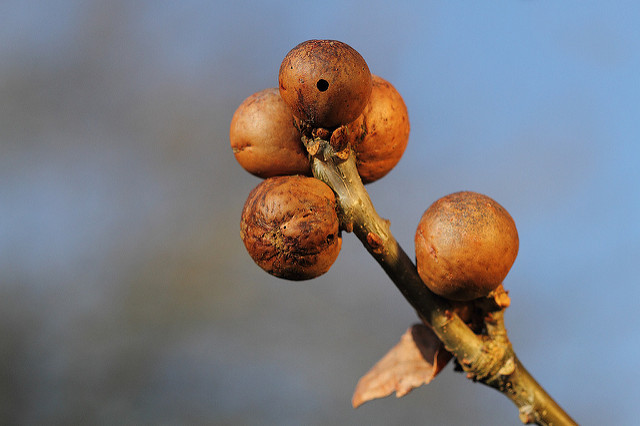
One can see from these mature Galls that the female wasp larva that lived inside has already emerged through the tell-tale ‘woodwarm-like’ hole as an adult winged gall-wasp (probably back in September). These Marbal Galls may remain attached to the tree for several years to come.
Spangle galls are up to 5mm diameter, with a central ‘pimple’ and scattered tufts of red hairs. Each contains a single larva and there are scores of galls on the underside of a single leaf. Most galls are yellow, but some are red and a small number sometimes develop on the upper sides of the leaves.
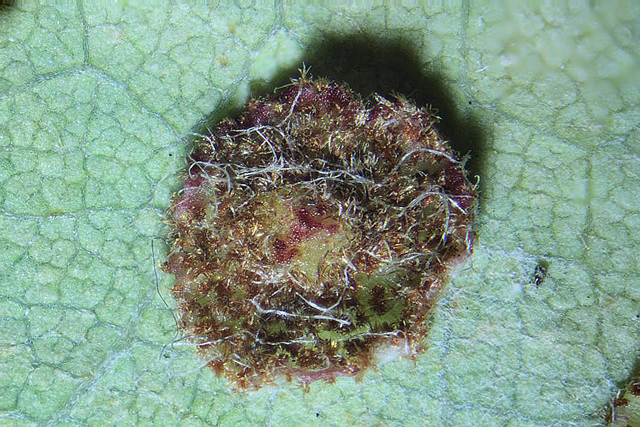
Magnified x40 on Nikon K-LE vintage microscope – stack of 7 images
I may know little about such plant galls but looking closer at them through my macro lens and microscope has revealed a foreign world of astonishing beauty and complexity.

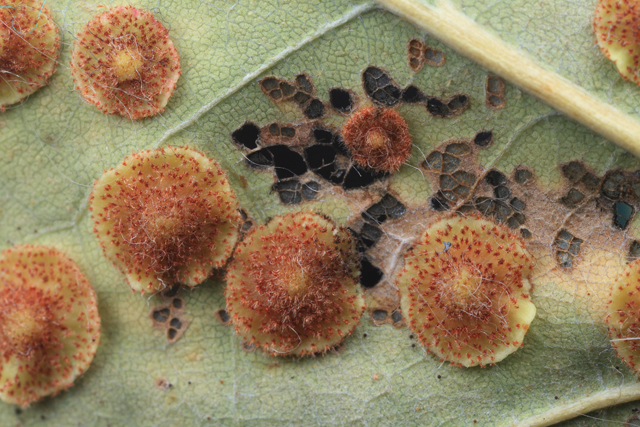
Leave a Comment